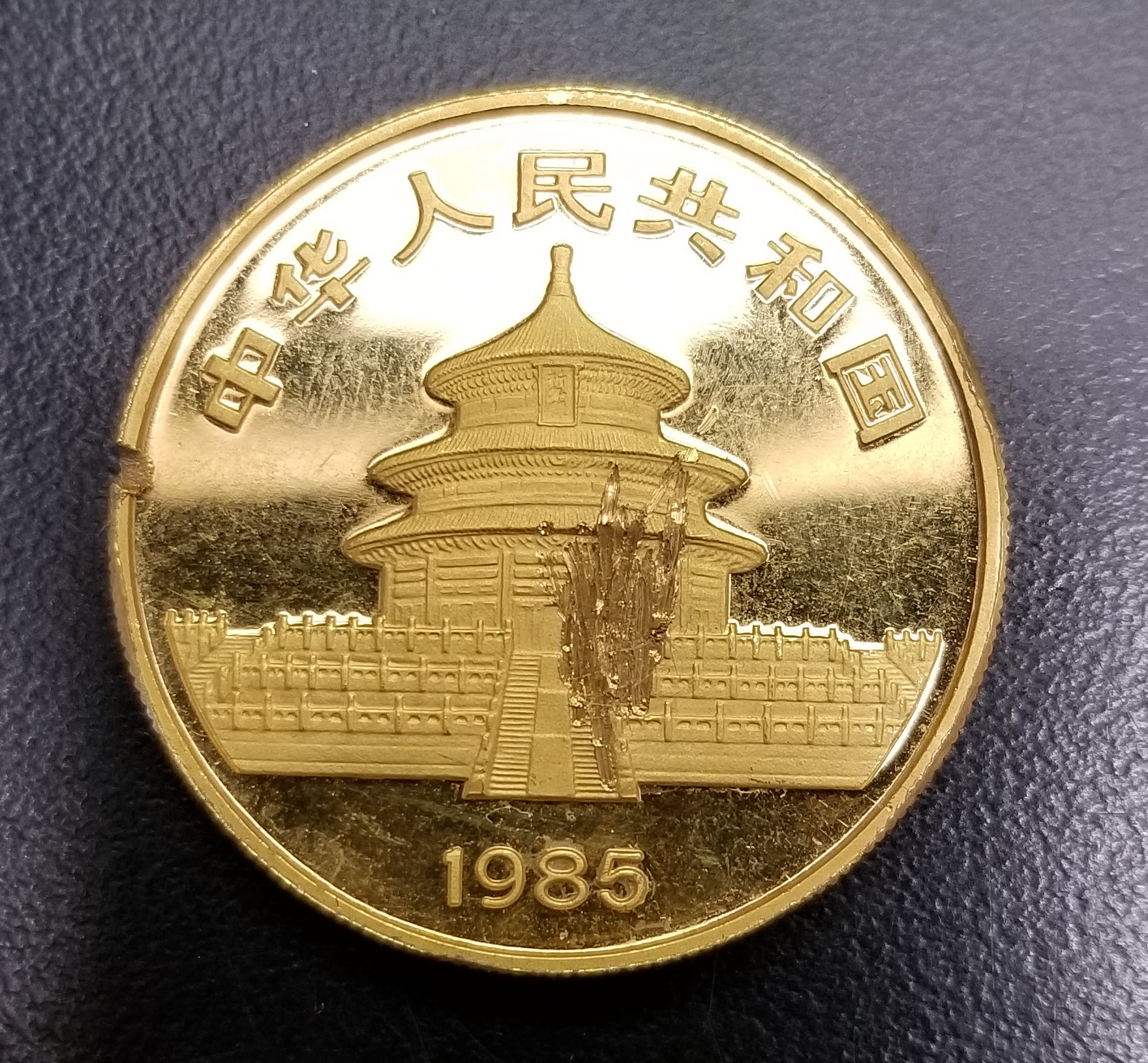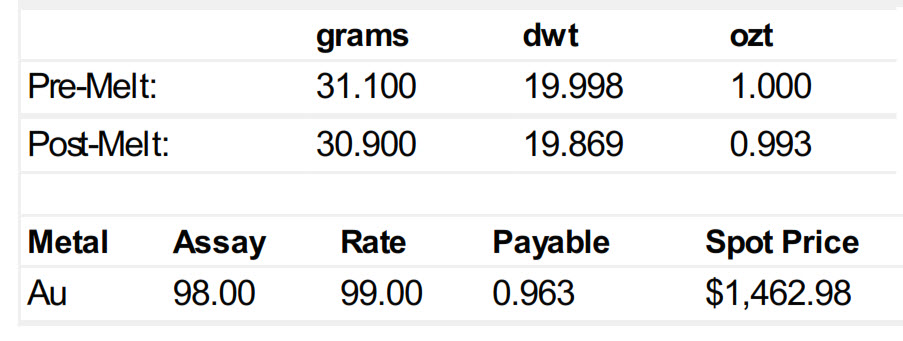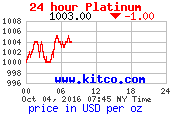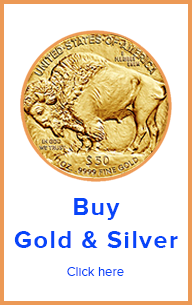Chinese Panda Gold Coin Real Gold Content


How Much Gold is in a Chinese Panda 1 Ounce Troy Gold Coin
Real Gold Content of Chinese Gold Panda
Chinese Gold Bullion Real Fineness
How Much to Pay for a Chinese Gold Panda
Older Chinese Panda Gold Coins are Often Less than .999 Fine
Different types of Chinese Panda Gold Coins
Testing Gold Coins
Lessons Learned
A few weeks ago, I bought a 1985 1 ozt Chinese Panda gold coin. All was good except that the testing was a little off. I had to do additional electronic and chemical testing to see what the situation was. See image above. I decided to send the gold coin to the refinery get the real fineness. The gold coin tested at between 97% and 98% fineness with XRF equipment. Basically, in this Chinese Panda gold coin there is a gram of non-gold in the supposedly pure gold coin. I know a lot of very knowledgeable gold dealers. Other dealers had similar experience.
The Chinese Gold Panda coin is the Chinese government’s official gold coin. It is for sure a 24K gold coin, but is it really 999 parts per 1000 fine gold? This is the subject of this article.
As a gold buyer, my objective is to buy as much as possible of pure gold as I can. Thus, it is critical for me, as a gold buyer, to get as much actual fine as what I am supposed to receive when buying and paying for it. In other words, if a gold coin has less fine gold content than it is supposed to have, I am getting short changed. This is not good for me as a professional gold buyer.
What is a Chinese Panda Gold Coin?
There are two types of Chinese Panda Gold Coins.
- 100 Yuan Gold Panda – Minted between 1982 and 2015 – This gold coin is based on the 1-ounce troy standard. Its mass is 1 ounce troy, or fractions of it at ½ ozt, ¼ ozt, 1/10 ozt, and 1/20 ozt. Multiples also exist (bigger coins). This series is often referred to as the “older gold Pandas”.
- 500 Yuan Gold Panda – Minted from 2016 to present – This gold coin is based on the metric standard. Its mass 30 grams or fractions at 15 g, 8 g, 3 g, 1g. Multiples also exist (bigger coins). This series is often referred to as the “newer gold Pandas”.
Critical Precious Metal Concepts
To make things easier to understand, let me first review a few concepts.
- “Fine Gold” is pure gold
- “Fineness” means how fine, or pure gold bullion or alloy is
- “Hallmark” is a symbol indicating certain matter or fact
- “24 Karat” or “24K” is a fineness standard of 24 parts per 24 parts pure gold
- “.999” is a fineness standard of 999 parts per 1000 parts pure gold
- “Bullion” is a substance in concentrated form
- “Gold Bullion” is gold in concentrated form
- “Bullion Round” is bullion shaped in the form of cylinder
- “Gold Bullion Coin” is fine gold bullion, shaped in the form of a cylinder, with a monetary denominated face value, and minted by a government institution from a sovereign state
- 1 Ounce Troy is a weight measuring unit equal to 31.103 grams
Thus, the Chinese Panda gold coin is a cylinder-shaped piece of gold bullion minted by the Chinese government, with a fineness standard minted into the coin of .999.
Distinguishing Chinese Panda Gold Coins
At buying Chinese Panda gold coins, it is critical to look at the dates and minted in fine mass hallmarks. As explained above, gold Chinese Panda coins are two types.
- Year 2015 and older Chinese Panda gold coins 1-ounce troy based (31.103), thus bigger.
- Year 2016 and newer Chinese Panda gold coins are gram based, based at 30 grams, thus smaller.
To distinguish the coins, look at the minted in dates and mass. The older version coins are minted with the hallmarks “100” Yuan. The newer coins are minted “500” Yuan.
Nominal Fineness versus Actual Fineness
Theoretically, because the older gold Chinese Panda coins are bigger, supposedly they should go for more. The 100 Yuan Chinese gold panda theoretically has over 1.03 grams more gold than the 500 Yuan gold coin. However, if the older coin is not of as fine gold content as stated in the minted-in hallmarks, then both coins have about the same amount of gold fineness.
Testing the Chinese Panda Gold Coin
As a precious metals dealer, I am very keen on testing bullion for fineness prior to paying for it.
The first thing I do with a gold coin is take a good look at the coin, observe if all checks right. If not, get a magnet. Then take it further if needed. Most fake coins don’t get beyond this level.
All was good so far when the above-mentioned gold coin was presented to me. The second thing I did is check it against the specifications. All was matching just right. So good so far then.
The next step for me is always the electronic testing. For this I use the Precious Metal Verifier Pro (https://www.sigmametalytics.com/ ). I would not say that the gold coin failed the test, but it was for sure off the mark buy a little bit. So, I knew the material was gold, or tested like it. The test result indication was probably because of gold fineness. Another possibility, but less likely was that the gold coin was gold plated base metal.
Being this the situation, with permission of the seller, I filed into the rim deep enough to expose the core. I also dug into the both faces of the coin with the file deep enough to pass through any plating. See image above. I inspected with my 10-power loupe. The material was all uniform.
Of course, now that the core was exposed, I tested with nitric acid at the cuts and waited long enough to let the acid work. No reaction.
At this point I knew the coin was off in fineness. So, it was gold bullion. It is just that the fineness was not as high as the minted-in .999 hallmark indicated.
Gold Buying Proposition
I decided to not pay full bullion price for the Chinese Panda gold coin. I offered an advance for the minimum gold fineness I knew I would get, plus the rest after getting refinery payout. The total payment to be 90% of spot. As mentioned above, the after-melt test result for the Chinese Panda gold coin fineness came at 97% to 98%. The testing was made with a highly calibrated XRF machine. See image below. The refinery paid 98%.
The seller accepted my proposition. I paid him an advance. The next afternoon, after getting the melt result, I paid him the difference.
Chinese Gold Panda Lessons Learned
- Older Chinese Panda gold coins are not always .999 fine gold. Often, they are of slightly lower fineness. Most likely this is due to available technology rather than fraud
- If the gold coin does not test as it is supposed to, test more and pay accordingly. The reason is evident. If the gold coins is of lower fineness, the buyer is getting less fine gold
- All gold coins must be tested


![[Most Recent Quotes from www.kitco.com]](http://www.kitconet.com/charts/metals/gold/t24_au_en_usoz_2.gif)
![[Most Recent Quotes from www.kitco.com]](http://www.kitconet.com/charts/metals/silver/t24_ag_en_usoz_2.gif)
![[Most Recent Quotes from www.kitco.com]](http://www.kitconet.com/charts/metals/platinum/t24_pt_en_usoz_2.gif)










